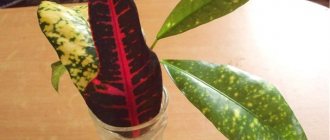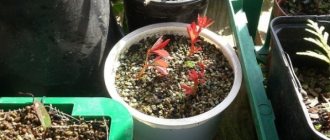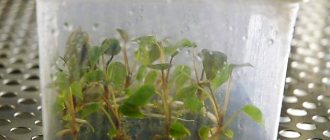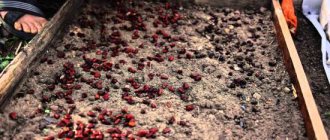Lilac is one of the favorite ornamental plants among summer residents. There are a huge number of its varieties. If you want to plant lilacs in your garden plot, the easiest way is to purchase a seedling ready for planting on the market. If you notice a rare variety, you will have to learn how to propagate lilacs from cuttings at home and other methods for this.
After planting, lilacs, in fact, do not need care. It’s not difficult to plant a bush you like on your own.
Various methods are used to propagate lilacs.
How do lilacs reproduce?
A flowering shrub with unique bright lilac fragrant inflorescences is difficult to ignore. Currently, there are more than 1,000 ornamental varieties that adapt well to the conditions of Russian sites.
To decorate the garden area with a group of lilac bushes, gardeners most often use the following propagation methods:
- rooting cuttings;
- breeding by layering;
- propagation by root shoots.
Each method is convenient and is used in certain cases. When is it better to take cuttings, and when to propagate a bush by shoots and layering? It is worth noting here that not all varieties are suitable for cuttings. The specimens Katerina, Havemeir, Krasnaya Moskva, Zhanna D'Arc have a low survival rate of cuttings, while the varieties Nadezhda, Mechta, Buffon, on the contrary, can be successfully grown from cuttings.
Layers and shoots are suitable for propagation of most varieties. Cuttings are chosen when you need to get many young plants at once for sale or to create a hedge.
Reproduction by shoots
How to plant lilacs so that they bloom faster than with cuttings? The most convenient and fastest way of propagation is to separate the shoots from the adult bush. Transplantation is carried out immediately in open ground. The seedling does not experience much damage at all.
Separation of the shoot is carried out in the fall, when the root system will not suffer much damage. In the morning or evening, the bush should be watered, then the young seedling should be separated. It is planted immediately in its place of permanent growth. Provide the seedling with good moisture and cover it with leaves in the winter.
Rules for taking cuttings
Cuttings are the most labor-intensive method of propagating lilacs, but this way you can get a large number of young plantings. It is not difficult to propagate a lilac bush at home from green or woody shoots taken from an adult plant that have grown this year.
It is advisable to use green cuttings, since their rooting rate is higher than that of lignified branches. Shoots are collected in late spring or summer, the reference point is the flowering period or its end. Green shoots should have completed the active growth stage by the time of harvest.
How to properly prepare green cuttings:
- The collection of shoots is carried out in the morning or in cloudy weather.
- Only young lilac bushes, up to 6 years old, are suitable for harvesting.
- Shoots of the third or fourth order of medium thickness are cut off, without signs of disease. The best shoots for propagation are located in the middle of the bush.
- The branches are cut with a sharp knife or pruning shears just below the node. The lower cut is made at a slight angle, the upper cut is made straight above the last node.
Preparatory work
- A suitable length is about 15-30 cm, each cutting should have at least 3 pairs of buds.
- All lower leaves must be removed and the upper ones cut in half. This way, less moisture will evaporate from the cuttings.
- For a day, the shoots are placed in a special solution that stimulates the formation of roots, for example the drug Epin-extra.
Branches growing from thick branches or fatty shoots are not recommended for cuttings.
When is the best time to root green cuttings? Germination begins immediately after harvest in the spring and until mid-summer. You can root a lilac cutting in a special substrate. Options for filling containers:
- A mixture of perlite (1 part is enough) and peat (2 parts). It is not recommended to include sand in the substrate.
- A nutrient layer of humus of about 10-12 cm is first placed on the drainage layer in the box, and then the substrate is covered.
Substrate for planting
- Drainage layer option: shell rock, expanded clay, small pebbles (total layer thickness up to 10 cm). A soil mixture is laid on top of the drainage.
Where to start rooting lilacs
Procurement of material for future plantings can only be done during a certain period. The bush should be in a state of beginning to bloom. At this point, nutrients accumulate in the branches in maximum quantities.
Sometimes you can find recommendations where the authors state that you need to wait until flowering is completed. Unfortunately, after flowering, the concentration of nutrition drops sharply, which significantly reduces the survival rate of cuttings.
Preparation must be done two to three days before the flowers begin to bloom. It is at this time that the plant has the maximum amount of nutrition available. The probability of rooting reaches up to 95%.
Small woody shoots located near the flowers are selected. The flowers themselves are not used, you need what is located next to them. The branch to be cut must have at least 6 leaves - this is a sign of sufficient accumulation of strength for subsequent actions.
Harvesting cuttings
When formed on a side shoot, near the peduncle, from four to six leaves, it can be used as a nursery. It is advisable to have a total length of 12 to 15 cm. The presence of three pairs of buds should be observed on the stem.
Attention! Using shoots that have no flower stalks next to them is useless. They cannot form roots. They don't have enough nutrients.
As practice shows, leaves should not be left on the prepared material. They evaporate moisture, so you only need to leave part of the leaf plate.
Important! Many authors rewrite the same text many times. At the same time, they claim that all existing (4...6) leaves need to be cut in half. You can't do that! The plant will not be able to take root and provide moisture to the remaining foliage.
Only one sheet is left, from which at least 60% of the surface is removed. Such a cutting has about 80...85% survival and rooting. From below it is cut at an angle of 45 ° below the bud.
To guarantee future planting material, several similar cuttings are prepared. They need to be prepared for planting on the day of cutting.
Preparation of substrate for rooting cuttings
A special nursery is prepared for cuttings:
- Take a seedling box with a depth of at least 60 mm.
- There should be holes at the bottom for water to drain.
- Placed on a pallet.
- Lowland peat is poured.
- Approximately 20...25% of river sand is mixed into it.
- Add perlite, approximately 50% of the volume of peat.
- The whole mixture is stirred.
- They install arcs, you can bend them from wire and install them from edge to edge.
- The film is being prepared. You can use polyethylene, or you can use a vapor barrier film recommended for wall insulation.
- Dilute the entire mass with a pale pink solution of potassium permanganate. It is advisable to heat it to a temperature of 60...70 °C. Not only disinfection will occur, but also the substrate will be moistened.
Prepare in advance the place where the nursery for the cuttings will be installed. It is advisable to have a shaded, warm corner. It should only be exposed to sunlight in the morning until lunchtime.
How to root green preparations?
How to root green cuttings, all stages:
- The prepared blanks are kept for 16-18 hours in a root stimulator solution. Epin-extra is suitable. Before planting, they are washed with clean water.
- The substrate is poured into prepared containers for growing.
- The blanks are dipped with a wet tip into a root formation stimulator (Kornevin).
- The cuttings are immersed 1.5-2 cm in the container so that the lower node is in the soil.
- A greenhouse made of transparent film or lid is installed on top. A plastic bottle with a cut will do. If the container is small, place 1-2 cuttings in it.
- In order for the rooting process to progress more actively, constant humidity and temperature are maintained in the greenhouse at 22-24 °C.
Planting work
- Watering, or better yet spraying, is carried out 1-2 times a week, but you need to ensure that the soil in the container does not dry out.
- Boxes with plantings are stored warm, but in a place protected from direct light. To prevent the formation of mold on the leaves, spray with a light solution of potassium permanganate once a week.
- Rooting occurs in approximately 1.5-2 months. After this, the greenhouse is removed and the young plants are gradually accustomed to more natural conditions.
Usually about half of the planting material takes root. It is advisable to harvest twice as many cuttings as you plan to plant.
By the end of the rooting period, the leaves on the seedlings may darken. This is not scary, the main thing is that the kidneys are active. It is recommended to plant a rooted cutting in the fall, or even better, wait until spring to grow young lilacs at home.
Video with recommendations from experienced gardeners.
Preparing and planting lilac cuttings
You need to prepare:
- root growth stimulator "Epin Extra" or heteroauxin;
- wood ash or “Kornevin” in powder form;
- nursery for cuttings.
Preparing a solution to stimulate root growth
Recipe No. 1 based on Epin Extra
- Dissolve 1 ml of Epin Extra in 1 liter of water (for 10 cuttings you need at least 200 ml of working solution).
- Pour the solution into a container, leaving 20...30 mm from the top edge.
Recipe No. 2 based on heteroauxin
- Dissolve 1 tablet in 1 liter of water.
- Pour the solution into a suitable container (about 200 ml is needed for 10 cuttings).
- The prepared rooting material is washed in warm water, an oblique cut is made under the bud at 45°, the remaining water is shaken off and placed in the rooting solution. The cuttings are kept in the solution for at least 16…20 hours.
- Take it out and dip it in Kornevin powder or wood ash.
- Spray the substrate with the solution where the planting branches were kept.
- Planted according to the following scheme: the distance between the rows is 10...12 cm, the distance in the row is 6...8 cm.
- They are buried by 3...5 cm (light touching of the cut leaves is allowed).
- Cover the greenhouse with film.
Landing at the site
Strong green cuttings that managed to take root before the onset of autumn can be planted in the garden bed in September, and the rest can be left in the greenhouse until spring. Transplant stages:
- A place for further growth of lilacs is selected that is sunny and protected from drafts. Slightly acidic or neutral soil with good drainage and low groundwater levels is optimal.
- Planting by cuttings is carried out in cloudy weather or early in the morning.
- Seedlings should be moved from pots with extreme caution, as young roots are very fragile. Before transplanting, seedlings are watered abundantly.
Before transplanting, seedlings are watered abundantly
- It is necessary to plant varietal lilacs at a distance of at least 30 cm from each other. Subsequently, the grown bushes from the school bed are moved to a permanent place of growth, then the interval between plants is maintained at 1-1.5 m.
Young lilacs bloom in 4-5 years.
The soil on the site cannot be compacted due to the fragility of the root system.
Cutting and processing
Now this segment of the shoot needs to be turned into a cutting:
- At the bottom of the cutting (under the very node) an oblique, long cut is made.
- At the top (above the second node) - a straight, horizontal cut.
- The lower leaves are completely torn off.
- The top ones are half.
Number 1 in the picture is the first node and the first pair of leaves. Number 2 is the second node and the second pair of leaves.
Now the lower cut of the cutting needs to be treated in a solution of a root formation stimulator (for example, “Kornevin”) or in a special powder for cuttings.
Root shoots as planting material
Propagation by root shoots is a natural and convenient way. Most varieties of lilac have the ability to independently form root shoots. The daughter bush retains all the varietal characteristics of the mother plant. Another advantage of the method is a one-time transplant of the seedling. In this case, he receives a minimum amount of damage.
How lilacs reproduce by root shoots, stages:
- Seating is carried out in the fall on a cloudy day no later than mid-October.
- Before dividing the shoots and the mother bush, the soil is watered abundantly.
- The main root is carefully separated at a distance of at least 15-20 cm from the mother bush.
- After transplanting, water the soil abundantly.
- The first year, the seedlings will need shelter for the winter from spruce branches.
Overgrowth
In this way, you can plant lilacs in the summer or late spring, so that the seedlings have more time to adapt to a new place.
Lilac grafting
Grafting is the most effective way to propagate varietal lilacs.
You can graft not only on wild lilac, but also on any varietal lilac. You can grow a seedling for a rootstock yourself from seeds, but this will take you a couple of years; you can graft it onto it once it reaches a centimeter thickness.
There are many methods of grafting plants; for lilacs, copulation, ordinary grafting with a cutting behind the bark, grafting into a cleft, budding with a dormant bud (summer) and budding into the butt are best suited.
Deadlines
If you can cut lilacs only in the spring, when flowering occurs, then you can graft most of the season.
According to the time of vaccination, they can be divided into spring, before the sap begins to flow, and summer, when the tree is fully nourished by sap.
Before sap flow, copulations and grafting into clefts are carried out. With the onset of sap flow, the usual grafting is done with a cutting; this usually occurs during the flowering of lilacs. The period of budding of a dormant bud depends solely on the stage of bud maturation and occurs in mid- or late summer, depending on the region.
Important!
Regardless of the period and type of vaccination, this should be done in dry, sunny weather.
The preparation of cuttings for scion is done at the beginning of winter, but it can be done at the end of winter or beginning of spring, before spring grafting.
Preparation of scion and rootstock
If the cuttings were cut at the beginning of winter, they are wounded in sawdust under the snow or in a damp cloth in a bag in the refrigerator.
For scion, you can buy it at special farms or from breeders. If you harvest cuttings yourself, you must adhere to a number of conditions.
Firstly, they are taken from known, proven bushes so that you know exactly what variety you are grafting. The bush should be relatively young, between three and ten years old.
Well-ripened, annual shoots are cut from the bush; they are cut from the sunny side of the bush, preferably from the south side, from the outer part of the crown. It is best to take shoots at the middle height of the plant, since the lower ones are usually still small, and the upper ones are already too thick to take root. The optimal cuttings will be 30-40 cm long and about 7 cm thick, with short internodes and well-defined, developed growth buds; there should be from 4 to 5 of them.
The rootstock can be used at different ages. Only the method of grafting will differ, for example, by copulating on thin shoots, and by copulating by bark on shoots thicker than one and a half cm. If an adult bush with a thick trunk is being grafted, then it is better to graft on all skeletal branches.
Did you know?
Lilac is a member of the Olive family, and lilac flowers are edible.
Budding process
Budding with a dormant bud is one of the main methods of lilac grafting. It is held in July or August. For the rootstock, two-year-old seedlings or root shoots are taken.
In anticipation of budding, a couple of weeks in advance, the vegetation around the rootstock is cleared, and the lower lateral shoots and shoots coming from the roots are cut off. Before grafting, the trunk of the rootstock is thoroughly cleaned with a damp cloth.
A dormant bud (scutellum with an eye) is cut from the cutting; to do this, take the cutting with the lower part in your left hand, place the knife a couple of centimeters above the bud and, slightly cutting into it, draw it a little deeper than the bud, finishing the cut below it.
On the trunk of the rootstock, 3-5 cm from the ground, make a T-shaped cut in the bark, carefully separate the bark on both sides of the vertical cut. The shield is placed in a T-shaped incision, removing the protruding part with a knife.
Then they wrap the grafting site, leaving the bud and petiole open. After the shield has fused with the barrel, the winding is removed. In early spring, part of the rootstock above the established bud is cut off.
Plant care
Usually the graft takes root in a couple of weeks, but they begin to grow much later, depending on the timing of grafting this summer, or even next. Therefore, as long as the cuttings have not dried out and the buds on them are green, the grafting is considered successful.
The scion garter is removed to avoid it growing into it, and if there is confidence that it will not be broken off by the wind. To ensure engraftment, it is necessary to remove shoots below the grafting site.
Root layering
You can propagate lilacs by layering. This propagation option can be carried out using 3 methods:
- simple abduction;
- Dahlem method (vertical layering);
- Chinese method (horizontal layering).
Simple lead
This option for propagating lilacs is very simple to implement. In the spring, strong branches at the age of 1 year should be bent to the ground and buried, first secured with a pin or bracket. During the growing season, it is necessary to promptly moisten and add soil to the shoot in the place where it was buried.
This method requires a long time, since it will be possible to separate the young plant from the mother bush no earlier than 4 years after complete rooting and the formation of its own root system.
Dahlem way
The process of lilac propagation in this case will also drag on for several seasons, since the preliminary preparation alone takes 2 years. It consists of the following steps:
- selection of mother bush;
- complete pruning of branches in the fall for two seasons.
In the third year, as soon as the branches on the mother bush reach 20 cm in length, it is necessary to carry out the procedures in a certain sequence. Step by step it looks like this.
- The very first buds, which are the most developed, are selected, and an incision is made in the bark under them. It is wrapped with wire in several turns, this is necessary in order to stimulate root formation. This is done with several of the strongest shoots so as not to weaken the entire bush.
- The shoots are buried halfway, then soil is added as the young bush grows, so that it is always half in the ground.
- In the fall, the cuttings must be dug up and replanted for growing.
Caring for lilacs in the garden
Growing conditions
Caring for lilacs in the garden will not be difficult even for a lazy gardener. How to grow lilacs? It will grow on its own, you only need to water it in the first half of summer as the soil dries, spending 25-30 liters of water per bush, and loosen the soil in its tree trunk circle to a depth of 4-7 cm 3-4 times per season, simultaneously removing weeds. In August and September, watering lilacs is carried out only in case of prolonged drought. In 5-6 years, with easy care, your seedling will turn into a lush bush.
As for fertilizing, in the first 2-3 years only a small amount of nitrogen is applied to lilacs: from the second year - 50-60 g of urea or 65-80 g of ammonium nitrate for each bush. Although organic fertilizers have a much more effective effect on the plant, for example, from 1 to 3 buckets of slurry for each plant. To obtain a solution, one part of cow dung is diluted in five parts of water. Fertilizer is applied into a shallow furrow dug along the perimeter of the tree trunk circle no closer than half a meter from the trunks.
Potassium and phosphorus fertilizers are applied once every 2-3 years at the rate of 30-35 g of potassium nitrate and 35-40 g of double superphosphate per adult plant. The granules are applied to a depth of 6-8 cm with mandatory subsequent watering. But the best complex fertilizer for lilacs is a solution of 200 g of ash in 8 liters of water.
Transfer
Transplanting lilacs 1-2 years after planting is a mandatory procedure for experienced gardeners. And here's why: lilac very quickly sucks all the nutrients out of the soil, even if you carried out regular fertilizing, so after two years the soil no longer contains the energy that the plant needs for intensive growth and bright flowering.
Three-year-old lilacs are replanted no earlier than August, and young bushes - at the end of spring, immediately after flowering, otherwise they will not have time to take root. First, planting holes are prepared as described earlier. Before replanting, inspect the bush, remove all damaged, dry and unnecessary lilac shoots and branches. Then the bush needs to be dug along the projection of the crown perimeter, removed from the ground along with the earthen lump, laid on oilcloth or dense fabric and moved to a new hole, which should be so much larger in volume than the earthen lump of the bush so that a significant amount of nutritious soil can be added to it. .
Trimming
Young plants under two years of age do not need pruning, since all their skeletal branches have not yet formed, but in the third year they need to begin forming a crown, which will take 2-3 years. Lilacs are pruned in the spring, before the sap begins to flow, until the lilac buds begin to swell: only 5-7 beautiful branches equidistant from each other are left, and the rest are cut off. Root shoots are also removed. Next year you will have to cut off about half of the flowering shoots. The principle of pruning is that no more than eight healthy buds are left on each skeletal branch, and the rest of the branch is pruned so as not to overload the plant during the flowering period. Simultaneously with formative pruning, sanitary pruning is also carried out: frozen, broken, diseased and improperly growing shoots are removed.
If you want to form a lilac in the form of a tree, you need to choose a seedling with a straight and strong vertical branch for planting, shorten it to the height of the trunk, and then form 5-6 skeletal branches from the growing shoots, while simultaneously clearing the stem and trunk circle of growth. When the standard lilac is formed, all you have to do is thin out the crown annually.
Care during flowering
In the spring, when warm weather sets in, the amazing smell of lilac spreads throughout the garden, which is very attractive to beetles. You will have to manually collect cockchafers from the bush. During the active flowering of lilacs, it is necessary to cut off about 60% of the flowering shoots - this is called pruning “for a bouquet” and is done to more intensively form new shoots and lay flower buds for next year. If you want the lilac branches to last longer in the vase, cut them early in the morning and split the bottom of each cut branch. When the bush fades, it is necessary to remove all wilted brushes from it.
Pests and diseases
Lilac is practically invulnerable to pests and harmful microorganisms, but under certain circumstances it can be affected by powdery mildew, bacterial necrosis, verticillium and bacterial rot, as well as leaf or bud mites, hawk moth, lilac moth and leaf miner.
- Cleome: growing from seeds, types and varieties
Bacterial, or nectria, necrosis appears in August: the green leaves of the lilac become ash-gray, and the young shoots turn brown or brown. To avoid damage, you need to thin out the crown of the plant, thereby increasing its ventilation, remove diseased areas and prevent pests from appearing on the lilac. If the damage is too strong, you will have to uproot the bush.
Bacterial rot affects the leaves, shoots, flowers and buds of lilac. It can also appear on the roots in the form of wet, rapidly growing spots. As a result of the development of the disease, the leaves lose turgor and dry out, but do not fall off immediately, the shoots dry out and bend. 3-4 treatments of lilac with copper oxychloride at an interval of 10 days will help you cope with the disease.
Powdery mildew is caused by a fungus and easily affects both young and mature plants: the leaves are covered with a loose grayish-white coating, which becomes dense and turns brown as the disease progresses. The disease progresses during dry, hot summers. When the first signs of the disease appear, the areas affected by the disease should be cut out and burned, and the bush should be treated with a fungicidal preparation. In early spring, the soil should be dug up with bleach at the rate of 100 g per m², being careful not to disturb the lilac roots.
Verticillium wilt is also a fungal disease that causes lilac leaves to curl, become covered with rusty or brown spots, dry out and fall off. Drying begins at the top of the bush and progresses very quickly. To stop the disease, you need to spray the bush with a solution of 100 g of laundry soap and 100 g of soda ash in 15 liters of water. Treatment of a diseased plant with Abiga-Peak is also effective. Affected areas should be trimmed and burned with fallen leaves.
The lilac hawk moth is a very large butterfly with a marbled pattern on the front wings, leading a nocturnal lifestyle. In the caterpillar stage, it is also quite large - up to 11 cm in length. You can also recognize it by its dense horn-shaped growth at the back of the body. Not only lilacs, but also viburnum, meadowsweet, ash, currants and grapes can become a victim of the hawkmoth caterpillar. The pest is destroyed by treating with a one percent solution of Phthalophos.
The lilac moth lives in light forests and hedgerows. It produces two generations in one season. As a result of the vital activity of its small caterpillars, only the veins rolled into a tube remain from the leaves, and the buds, flowers and buds disappear completely. The pest can be destroyed by treating lilacs with Karbofos or Fozalon.
The lilac leaf mite is a small insect that sucks juices from the underside of lilac leaves, causing them to dry out and turn brown. A large number of mites can destroy a large lilac bush in two weeks. To prevent this from happening, treat the plant leaves with a solution of copper or iron sulfate, do not forget to thin out the crown, feed the bush with potassium-phosphorus fertilizers and burn fallen leaves in the fall.
The lilac bud mite spends its life in the buds of plants: it feeds on their sap and overwinters in them. As a result, the buds become deformed, the leaves and shoots from them grow weak and underdeveloped, the lilac stops blooming and may die. To avoid such consequences, in early spring, as soon as the frosts have passed, remove dry leaves and root shoots from under the bush, dig up the soil in the tree trunk circle to the fullest extent, turning the earth over, and treat the lilac with a solution of copper sulfate.
Mining moths infect the leaves of plants, causing them to first become covered with dark brown spots (mines), and after a while they curl up into a tube, as if from fire. Sick bushes stop blooming and die within a year or two. The pest is destroyed by generously treating the leaves with Bordeaux mixture, a solution of Fitosporin-M or Baktofit, and for the purpose of prevention, it is necessary to remove and burn plant debris in the fall, and before frosts and in early spring, dig deep into the soil in the tree trunk circle.
Method 4: sowing seeds
Only natural types of lilac are suitable for propagation by seed. This method is worth resorting to if you need to get a lot of lilac seedlings at one time. For example, as rootstocks for grafting. But you should immediately understand that this process is far from fast.
To collect seeds from lilacs, you need to pick several inflorescences from the plant you like and dry them. The best time for this is September-October. Seeds can be sown immediately after being removed from dried inflorescences, or they can be stored until spring (but then they will need stratification).
Usually the seeds are sown in a box with steamed soil. In winter, it should be placed in a place where snow will not blow off it. This way the lilac seeds will undergo stratification under natural conditions and sprout in the spring.
Have you ever propagated lilacs? Which method do you like best? Share with us in the comments or on the forum.











